Affiliate marketing is a great way to increase your passive income, but it’s not without its challenges. To do it effectively, you need a fair amount of strategy to optimize your marketing efforts and increase your affiliate sales.
We’ve collected proven affiliate sales tips and tricks you can implement to expand your audiences, maximize your efforts, build your authority, and increase your passive income. These tips are useful to all affiliates, no matter which program and brand you’re working with.
Excited? Let’s go!
What is Affiliate Marketing?
Affiliate marketing is a marketing business model where an affiliate promotes products or services on behalf of a merchant. The affiliate earns a percentage or an agreed-upon rate for each sale generated through the affiliate’s unique tracking code.
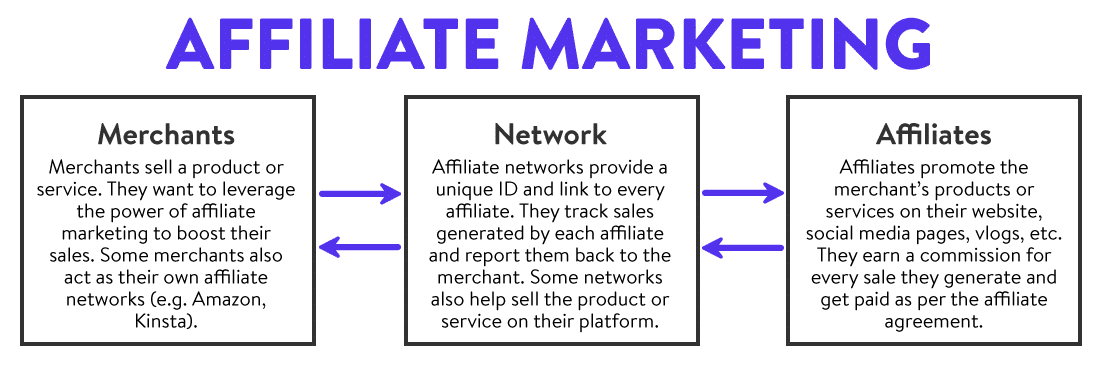
Affiliate marketing has huge benefits for everyone involved, including merchants, networks, and affiliates. It’s no surprise that this form of marketing has exploded in popularity over the years and shows no slowing signs.
Affiliate marketing spending is expected to reach $8.2 billion in the US alone. For more details, read our article on the specifics of affiliate marketing.
If you’re looking to get into affiliate marketing, Kinsta’s affiliate program is a great place to start. We offer commissions for every cloud hosting service referred. For WordPress plans, you can earn up to $500 for every referral and a 10% monthly recurring lifetime commission. And for Application Hosting referrals and Database Hosting referrals, you can earn 5% monthly recurring lifetime commissions. The potential of earning commissions on all of Kinsta’s cloud hosting services makes it one of the industry’s best deals.
21 Proven Affiliate Sales Tips and Tricks
Discover various strategies you can implement to, directly and indirectly, increase your passive income through affiliate marketing.
1. Use Key Performance Indicators (KPIs) to Track Your Success
Earning many clicks on your affiliate links is great, but are these clicks leading to sales? Don’t waste your time on vanity metrics. Focus on the numbers that matter.
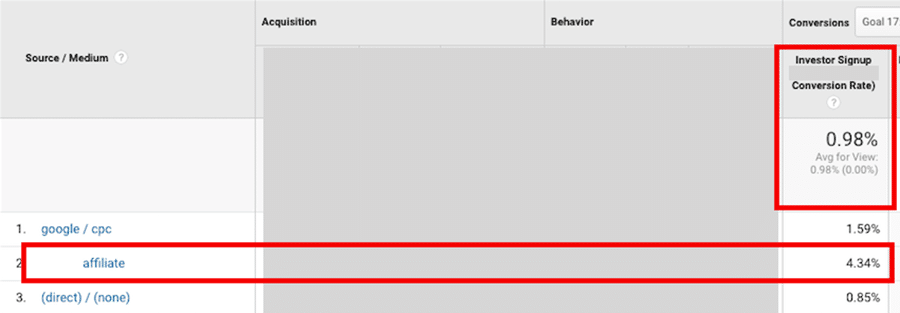
Key performance indicators (also known as KPIs) are metrics used to determine your marketing endeavors’ effectiveness. KPIs can tell you which campaign has seen the most sales, which campaign isn’t giving any valuable return, and which campaign needs tweaking.
Here are a few metrics to keep your eye on:
- Click-through rate (CTR): The number of clicks in comparison to the number of views. Use this metric to review the performance of your digital ads, links, call-to-actions, and more.
- Conversion rate: The number of conversions in comparison to the number of clicks. While conversions tend to be sales-related in affiliate marketing, a conversion can technically be any step you want your visitor to take. This includes downloading an ebook, signing up for a newsletter, or scheduling a free demo.
- Revenue by traffic source: The total income generated by different sources. Use this metric to determine which of your platforms (website, Facebook, YouTube, etc.) generate the most revenue.
- Average time spent on page: The average amount of time website visitors spend on a specific webpage. Use this KPI to determine which pages are valuable enough for readers and which ones should be reviewed.
Take note of your KPIs regularly and use these analytics to help increase your affiliate sales.
2. Link to Conversion-Optimized Landing Pages
Clicks don’t automatically translate to sales. Drive your traffic to the appropriate landing pages to maximize your click potential and increase the chances of generating more affiliate sales. Here’s how to create yours with WordPress.

Not only should your landing page be relevant, but it should also provide plenty of opportunities for users to convert.
For example, if you’re an affiliate for a travel company and your travel blog discusses French Riviera vacation packages, link directly to the company’s page where users can immediately buy those same packages.
If you’re a Kinsta affiliate and your blog post discusses website security, link to our page on secure WordPress hosting.
3. Use A/B Testing to Identify Your Best-Performing Content
Conduct A/B testing to determine which version of the two elements in your campaign performs better. Apply A/B testing on webpages, blog posts, banner ads, emails, and more to find the sweet spot that generates the most affiliate sales.

Here’s how to run your own A/B test:
- Choose which element you would like to evaluate. Typical choices include headline copy, call-to-actions, visuals, and layout.
- Decide which KPI(s) will measure the success of the test. For instance, if you’re testing your email subject line, you will probably want to look at the open rate.
- Choose a sample size (the number of tests needed to determine a winner).
- Create two versions of your test, with the only difference being the test element.
- Run your test.
- Evaluate your results based on your pre-determined KPIs. Take note of any external factors that may have affected your test.
Take a look at some of the best WordPress A/B testing tools to optimize your conversion rate.
4. Create (Or Update) Your ‘Tools’ Webpage
No matter your audience size, a webpage listing your go-to tools and services will help your followers. After all, they do follow you for a reason.
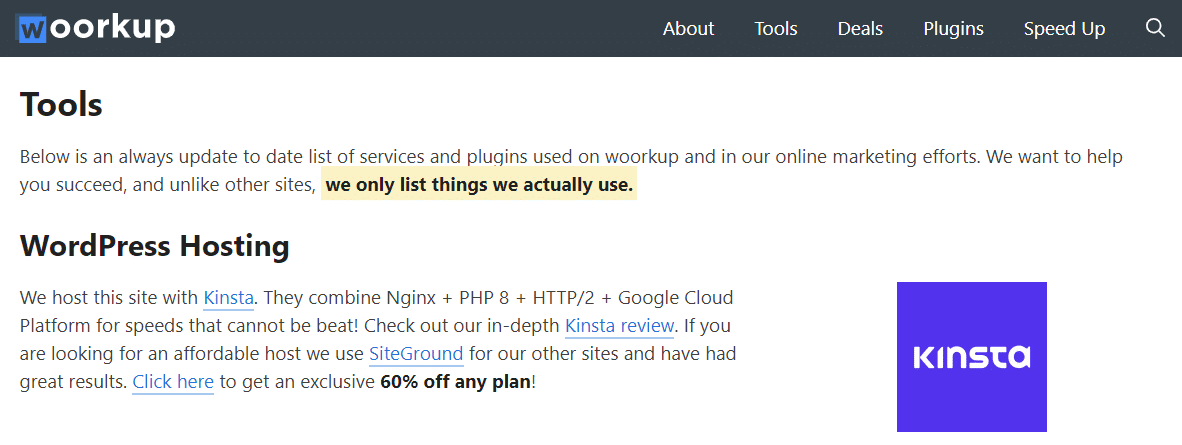
Boost your opportunity to make an affiliate sale by linking your tool list to conversion-optimized pages or other useful content such as your personal reviews and comparison articles. Keep it up to date and easily accessible to readers.
5. Write (Or Update) Product Reviews
Reviews are powerful. 93% of customers read reviews online before purchasing a product. Your reviews can help generate traffic and increase your authority in the industry by providing value and expertise.
And, yes, you’ve guessed correctly. They can increase your affiliate sales as well!
Unsure of what to include in a review? Here are some suggestions to get you started:
- What problem(s) did the product or service successfully solve?
- Did it live up to its expectations?
- Is it worth the price?
- Would you recommend it to a friend?
- What are your favorite features?
- How can the product or service be improved?
Most importantly, reviews need to be honest and accurate. Affiliate marketing is about relationships. And creating a stellar review for a less-than-stellar product is a quick way to lose your community’s trust.
If you already have reviews, look them over to ensure your opinion of the product or service hasn’t changed.
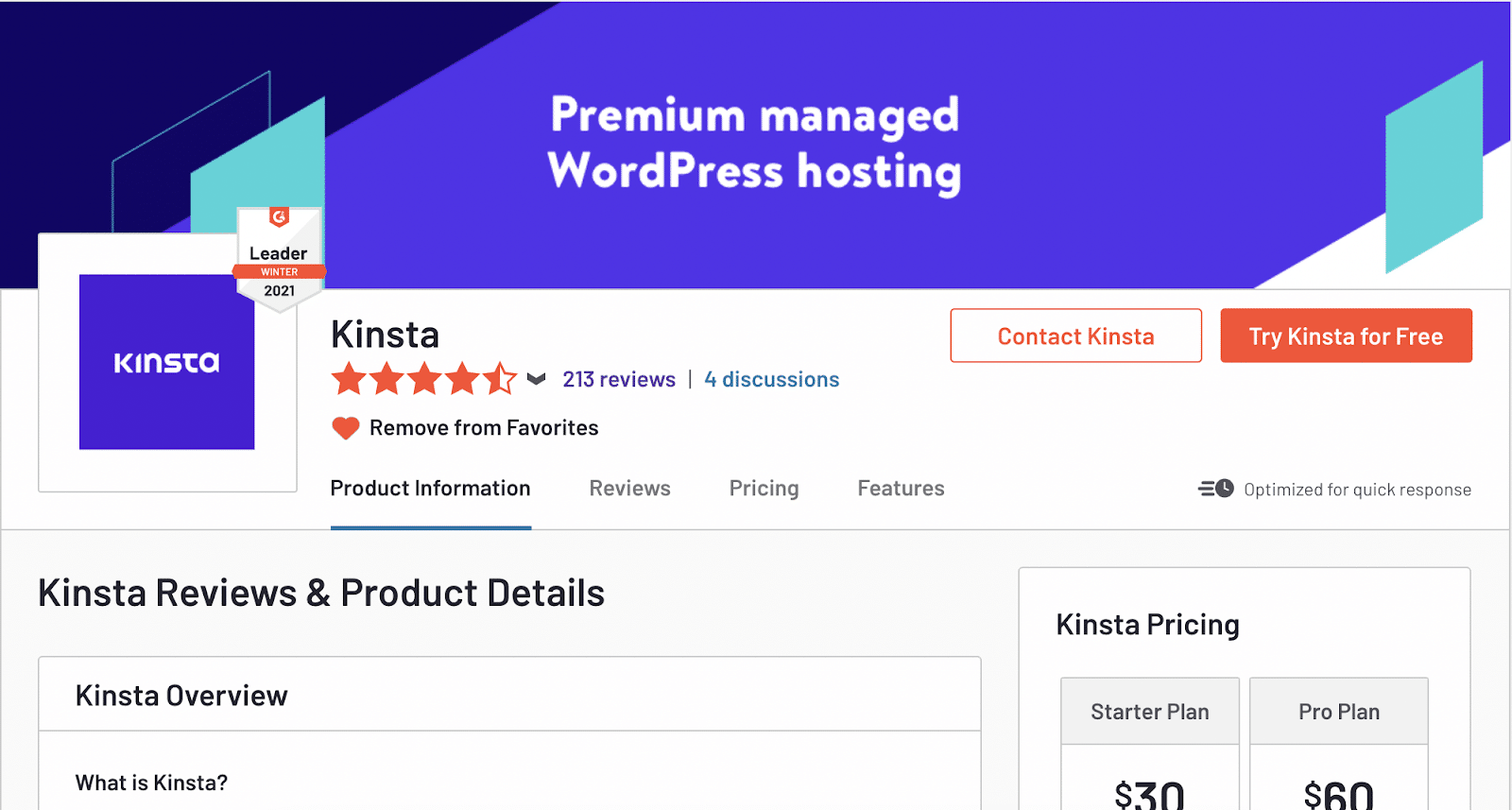
6. Highlight External Reviews (For Consultants)
If you’re a freelance developer or a consultant who earns affiliate commissions, you know how tough it is to persuade your clients to subscribe to a new tool.
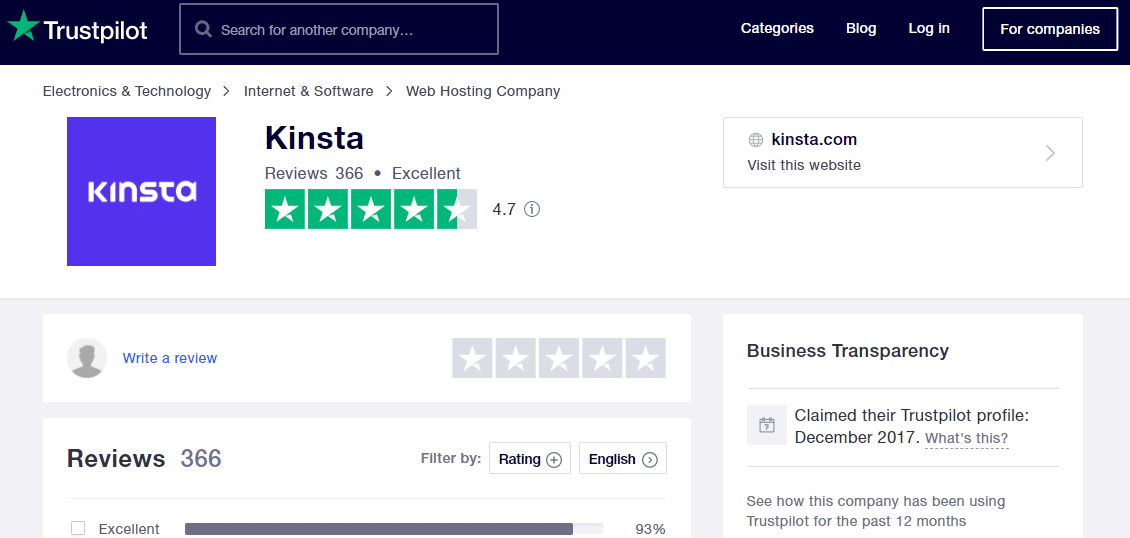
Backing up your recommendations with reviews from other happy customers or third-party sites is a great way to reinforce your proposal. It also increases your chances of earning an affiliate sale!
External reviews differ between industries. Some brands may have pages on their website dedicated to reviews. For inspiration, see Kinsta’s review page.
Third-party review sites such as G2 and Trustpilot are also great places to look for reviews.
7. Create Comparison Pages and Listicles (Or Both)
Comparison articles and listicles are very successful content pieces in the affiliate space. Like reviews, they can increase your web traffic and authority and help generate more affiliate sales.
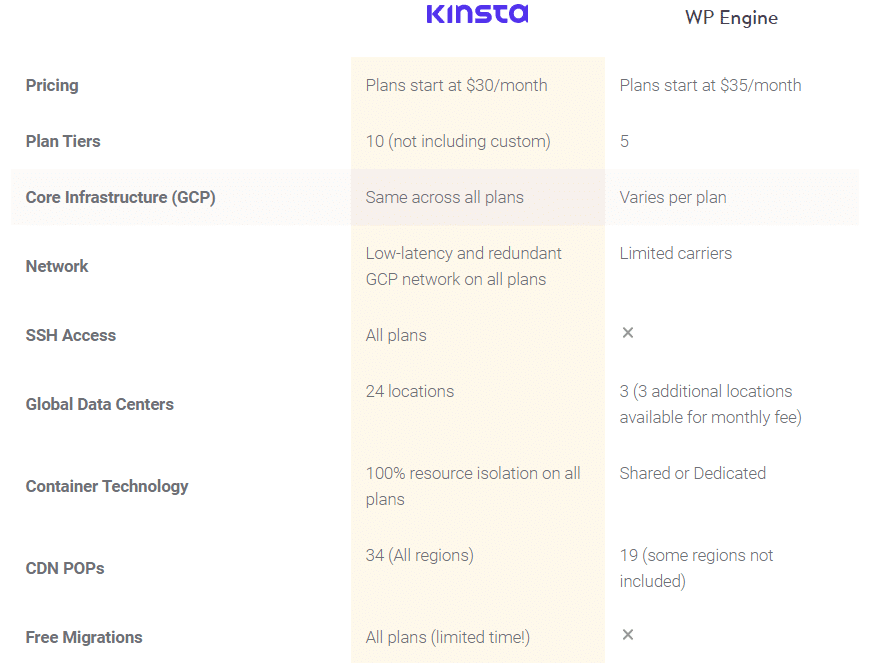
Comparison articles are a well-organized collection of notes on two or more products or services. They provide readers with the necessary information to make their own informed purchase decisions. Check out our comparison article on Kinsta and WP Engine as an example.
As their name suggests, listicles are articles presented in list form. This very article you’re reading is a great example of one.
Creators love them as they provide a lot of value for less effort. More importantly, readers love their easy navigation, simple format, and attractive headlines. For instance, check out our massive “76 proven tactics to drive traffic to your website” listicle.
It’s also possible to create a hybrid article that combines the features of comparison articles and listicles. Made by one of our affiliates, this article on the best WordPress hosting is a great example of effectively merging the two styles.
Add links to conversion-optimized content to increase your chances of generating affiliate sales.
8. Repurpose Your Existing Content
It is tough to create new content continuously, but existing content often doesn’t reach its full potential in just one go. Please make the most out of your content by repurposing it to work over several platforms.

Use this technique to increase your affiliate sales by reaching a larger audience and getting the attention of followers you missed the first time around.
Here are some examples of how to repurpose your content:
- Create a YouTube video based on content from a blog post.
- Create an infographic based on the key takeaways of a blog post.
- Cut your Facebook video into chunks and make a mini-series for IGTV.
- Use key quotes from a blog post to create unique images for Instagram.
- Create an ebook that combines the content from several related blog posts.
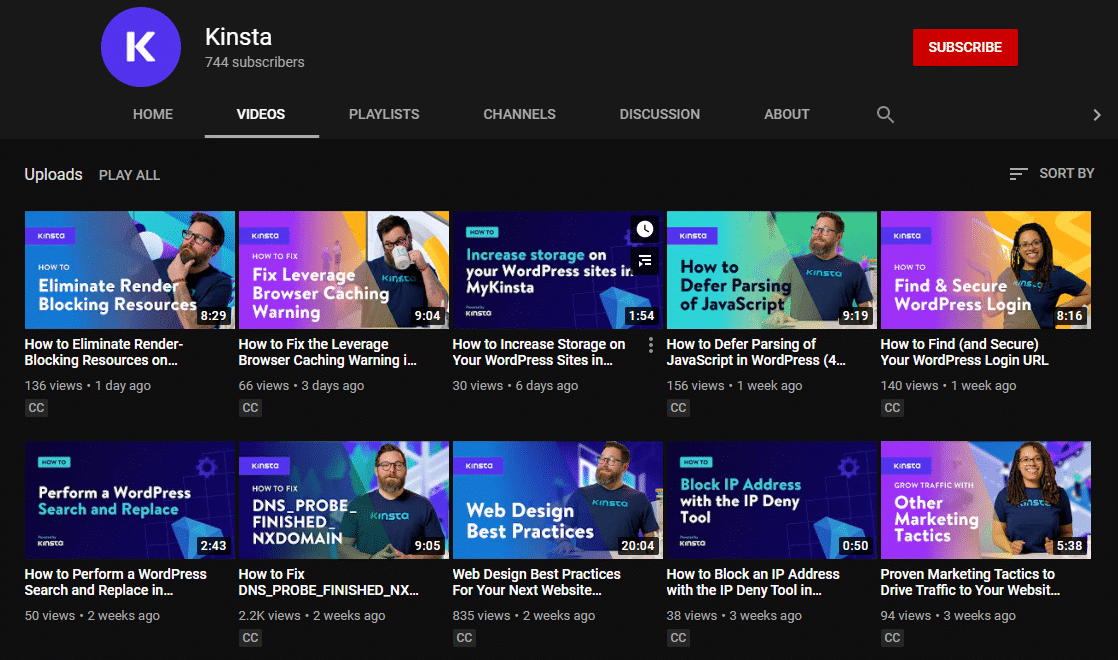
And if we haven’t said it enough already, link to conversion-optimized web pages wherever you can.
9. Add New Merchants to Old Content
Good quality, ‘old’ content has a lot of great SEO benefits. As it has lived longer on the internet, this content can gain organic search traffic and benefit from link sharing.
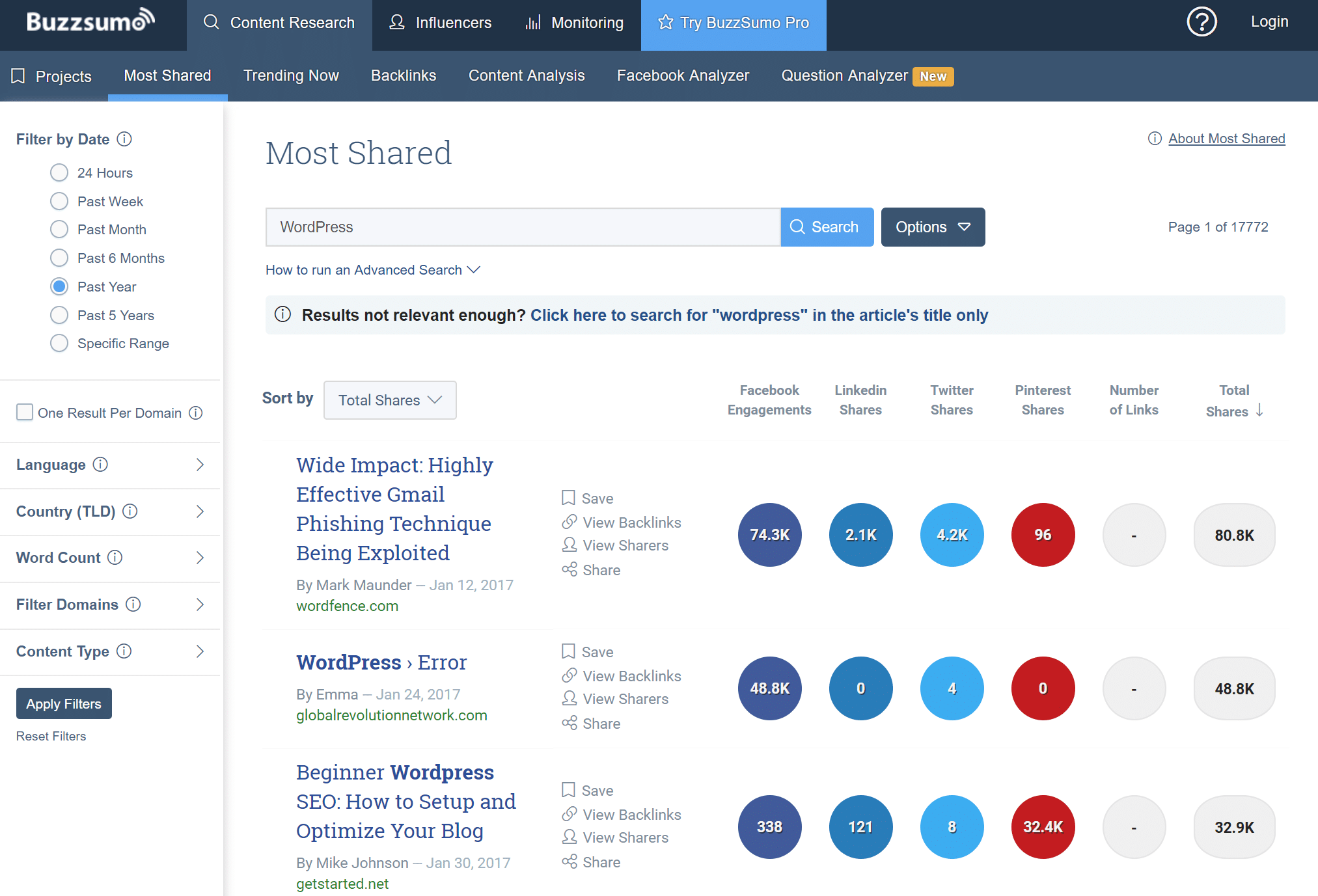
Increase the opportunity to generate affiliate sales by adding new merchants to your existing content.
And don’t stop there. Use this opportunity also to refresh the article’s content and fix broken affiliate links. Update old figures and link to your newer content and conversion-optimized landing pages. Not only will your readers appreciate it, but content updates will also entice Google to crawl your site more frequently, leading to a possible increase in search engine ranking.
10. Add Call-To-Actions (CTAs) to Your Long-Form Articles
Long-form articles are pieces of content that are typically 2000 words or longer. These articles allow you to go more in-depth on topics, are easier to adapt to evergreen content, and are often more share-worthy than the average post. They can also generate as many as nine times more leads.
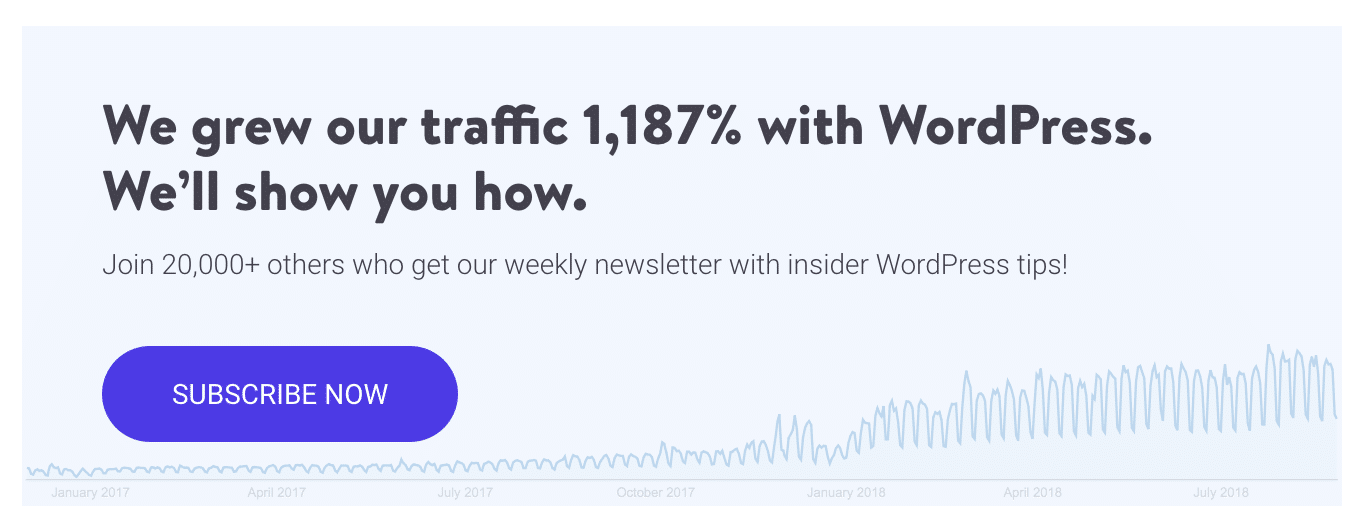
Call-to-actions (CTAs) encourage users to interact on your site. Most typically, they exist as hyperlinked text, buttons, or images. In affiliate marketing, CTAs almost always send users to a sales-focused landing page.
Add CTAs to long-form content to distribute the opportunities for conversion throughout your article. It’s a standard best practice to add a CTA at the bottom of an article. We’d also recommend including one near the beginning and a few in the middle, depending on length. That way, you’ll reach all readers, whether they are reading one section or the entire article.
Check out our guide on how to create outstanding long-form articles in WordPress.
11. Improve Your Search Engine Optimization (SEO)
Search engine optimization (SEO) means getting your content to appear at the top of relevant search results.

This is important as 75% of people do not go past the 1st page of search engines. Improving your website’s SEO can have dramatic results, including putting you ahead of your competitors, increasing your organic traffic, and improving your user experience.
Keywords, URLs, alt-text, image file names, links, and site speed are just a few of the many ways to improve your website’s SEO. We cover this topic extensively in our blog post 60 SEO Tips That Grew Our Traffic to >4M (+280% Growth).
While not directly impacting affiliate sales, improving SEO means your website and its content will be shown to bigger audiences. The more people who engage with your content, the more likely you’ll increase affiliate revenue.
12. Drive Traffic to Localized Sites
Data shows that users prefer to browse and shop in their native language. You’re more likely to earn an affiliate sale if you drive users to a localized site.
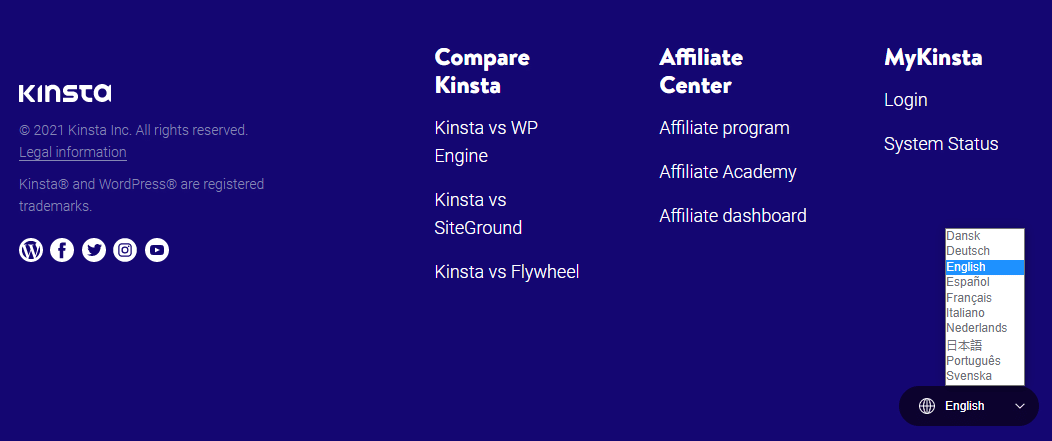
At Kinsta, we offer our content in English, Spanish, German, French, Italian, Dutch, Portuguese, Danish, Swedish, and Japanese. You can easily switch between sites by visiting the language menu in the bottom right of our footer.
In addition to languages, companies may have different sites for different countries. For instance, Amazon affiliates should recognize that Canadian Amazon users will shop on amazon.ca while American Amazon users will shop on amazon.com. This small difference in URLs makes a huge difference in user experience and your affiliate income.
13. Take Full Advantage of the Merchant’s Marketing Resources
Many affiliate programs offer their affiliates promotional materials to use at no extra cost. These assets can include website banners, sell sheets, logos and usage guidelines, email templates, example product copy, and more.
Increase the opportunity to convert by adding these visuals to your website and including a hyperlink to a conversion-optimized webpage. Reach out to the affiliate program coordinator to discuss the best ad placements on your site.
Kinsta affiliates have access to a series of website banners, each advertising a different feature. You can find these in your Kinsta affiliate dashboard.
In general, stay up-to-date with affiliate programs by following their affiliate blog.
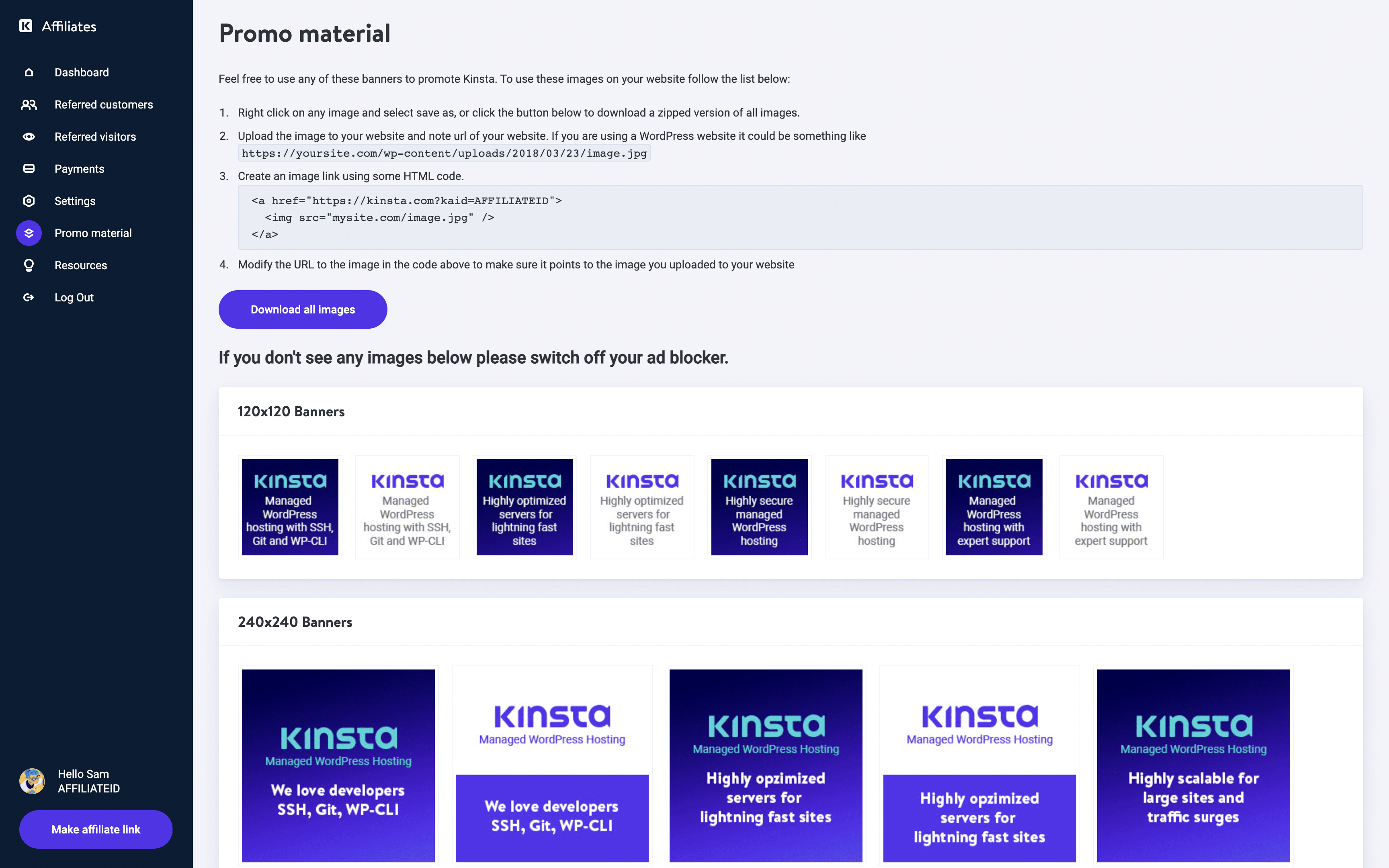
14. Promote Brand Discounts
Need we say more? Deals and discounts are an effective way to encourage sales, especially in affiliate marketing. Depending on the brand you’re working with, you could receive campaign goals, target audiences, promotion copy, and visuals in advance of a sale.
Note: At Kinsta, we take a different approach to discounts. We do not offer coupon codes as we price our plans on quality of service and support. We also prohibit our affiliates from referring to our existing discounts as coupons, deals, or special offers.
That doesn’t mean you can’t save money on our hosting services. For WordPress hosting, we offer two months free when you purchase a year upfront. We also give nonprofits a 15% discount. And for Application Hosting and Database Hosting, you can deploy and run your projects with $20 off the first month.
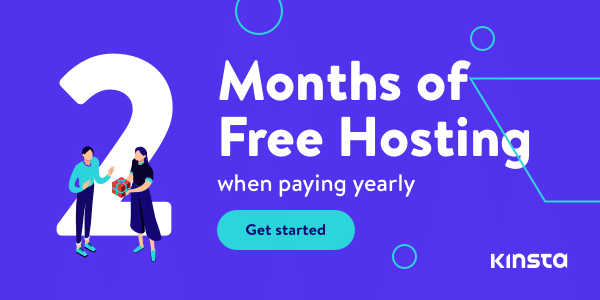
15. Start a Mailing List
Build your community with email marketing. Not only can you use it to reach new audiences, but it’s also another way to get more eyes on your valuable content and, as a result, more affiliate sales.

Though it may be tempting to only include affiliate links in your emails, this is a quick way to lose your audience’s trust and be seen as spam. Instead, provide value. Encourage your audience to click on various articles, and from there, direct them to convert with your affiliate links.
Here are some tips on how to give your email campaigns a competitive edge.
16. Start a Podcast
Video and/or audio podcasts are a good way to generate income through affiliate sales. In fact, 54% of podcast listeners are likely to consider brands they heard advertised on an episode.
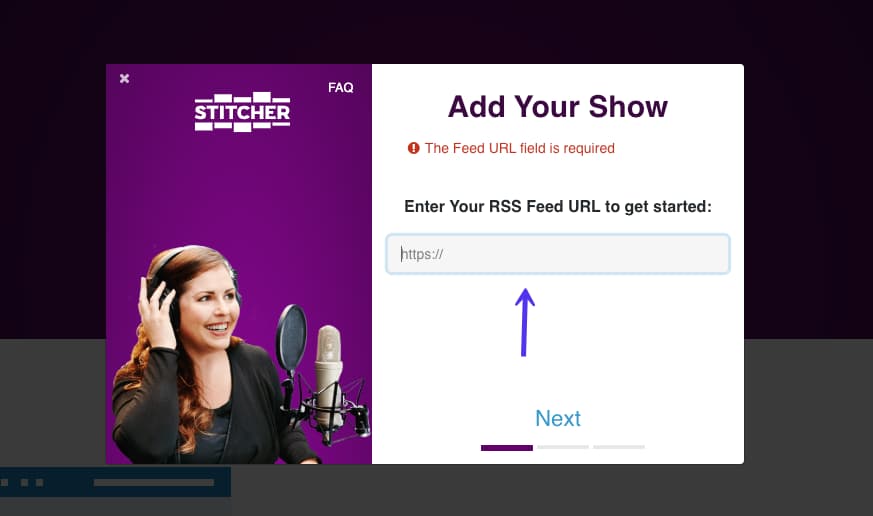
Encourage affiliate sales by adding links and relevant content to your show notes and descriptions, as well as adding these brands to your show’s conversation. In this case, less is more.
Podcasts do have a few constraints to keep in mind. The links you want your listeners to visit may appear differently depending on the platform they’re joining from. Our best practice is to include links in your show notes and descriptions and verbally describe to listeners how to find your content.
Links aren’t the only way to generate affiliate revenue in podcasts. As your podcast grows, you could ask the brands you work with to sponsor your podcast, whether for an episode or an entire series.
Here’s how to start a podcast with WordPress and grow your reach.
17. Cloak Your Affiliate Links
Affiliate links can be lengthy, complicated, and sometimes even scary-looking, especially to non-technical users. These links also tend not to provide information on where the user will end up once they’ve clicked on it, leading to even more hesitation.
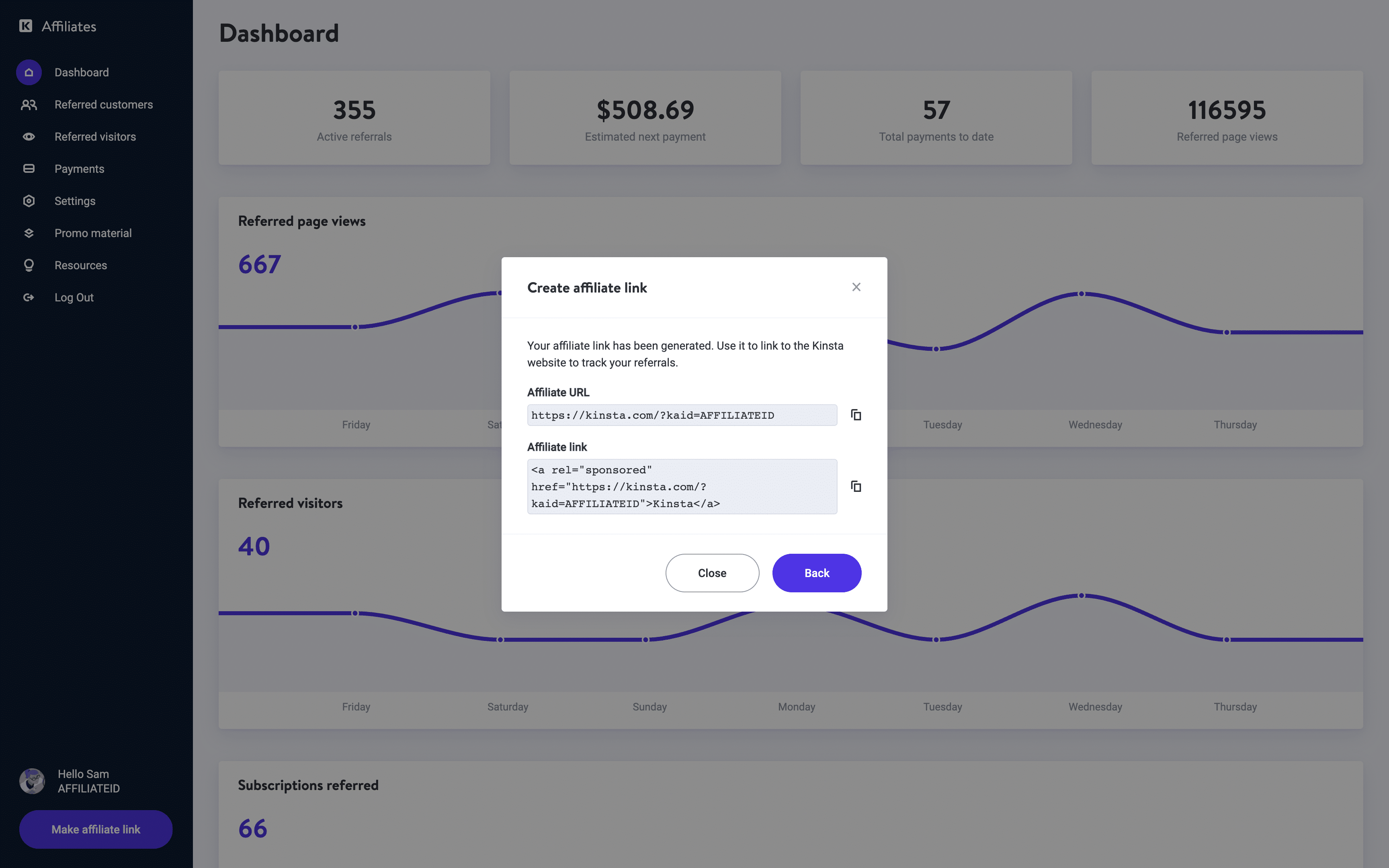
Create clean affiliate URLs with link cloaking to increase the likelihood that a user will click on your affiliate link. Don’t forget to include your affiliate disclosure on the page, so users know that your promotions are paid advertisements.
Of course, as seen earlier in this article, clicks are only half the battle. Make sure your URLs lead to the appropriate conversion-optimized landing pages. And keep track of your link KPIs to record success and optimize your tactics as needed.
18. Leverage Your Social Media Accounts and Their Tools
The power of social media is self-explanatory today. Social media is an important tool for all brands and businesses.
Just like a website, social media is yet another platform for affiliates to build audiences, promote content, and get more action from your affiliate links. Maximize your efforts by optimizing your content for each platform and using their unique tools to the fullest. Learn more about social media image sizes in our in-depth article.

At one point, and especially if you’re a one-person-show, being active on every social media channel may not be possible. Focus on the platform(s) in which your audience is most active and that you see the most significant return in sales. Think back to the ‘revenue by traffic source’ KPI.
19. Leverage the Power of Facebook Groups
Affiliate marketing is based on building and developing relationships. This is important as increasing your community means more people will be introduced to your content, which contains affiliate links.

There are several ways Facebook groups can assist you with building and developing relationships.
- Create a private Facebook group: Interact with your community by answering questions, linking relevant blog posts or videos, and connecting with like-minded people. This group can be open for anyone to join or only available to a particular segment. For instance, members of an online class you teach or subscribers to your email list.
- Join a pre-existing Facebook group: Engage with a pre-formed group within your niche to build your brand authority.
- Join your affiliate program’s Social Media channels: Learn more about affiliate marketing and increasing your sales.
20. Increase Your Presence on Quora
Quora is a user-generated question-and-answer online community.
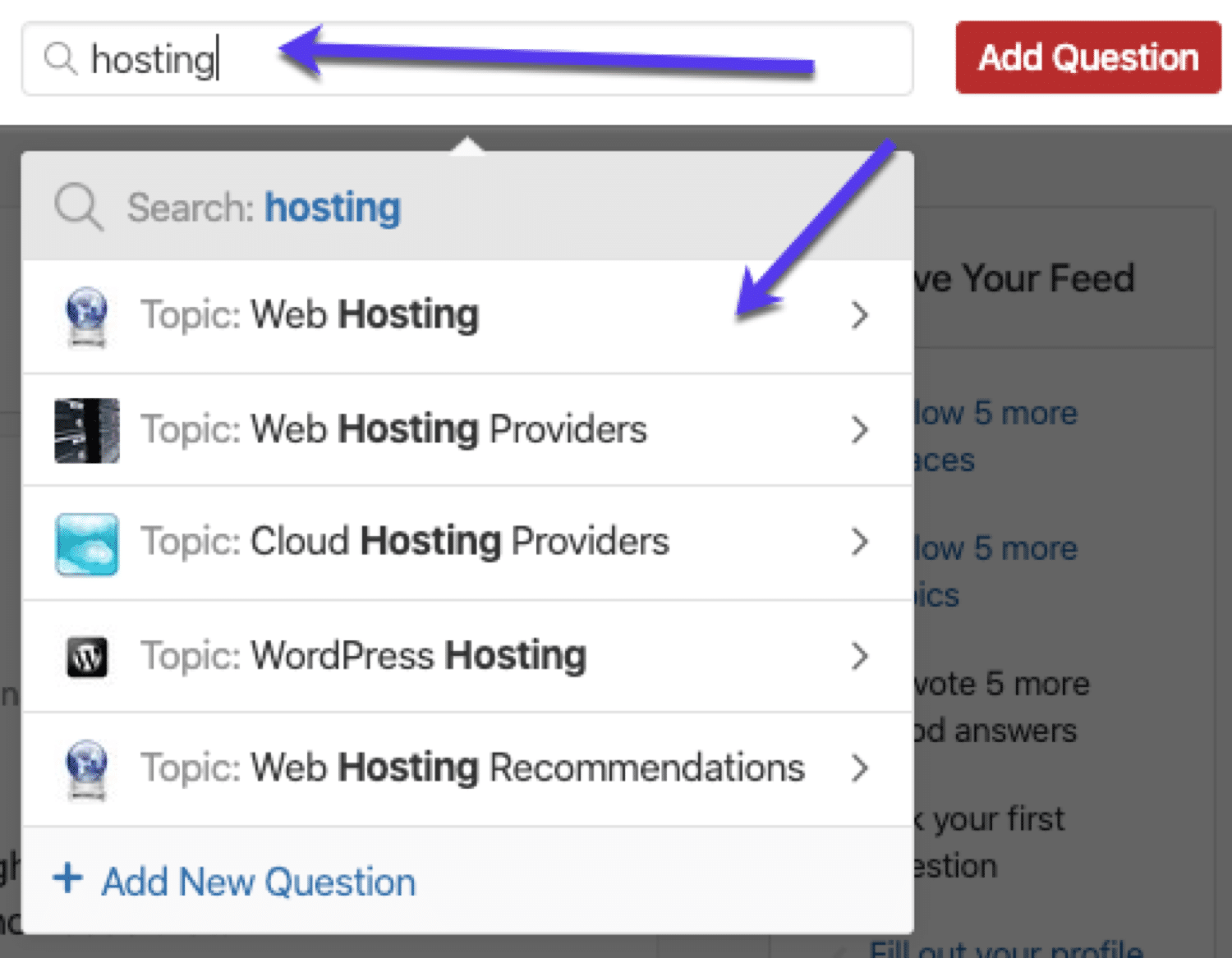
As direct affiliate linking is not permitted, it’s easy to pass over Quora as a platform to increase your affiliate sales. In reality, it’s the perfect example of how much give and take is required to build a community effectively.
In Quora, you can build your industry presence and authority by replying to popular questions with thorough answers that link back to your blog posts. Be mindful not to add too many links as Quora moderation is quick to remove and ban accounts they consider spam.
It may not directly lead to sales, but the effort will pay off with the authority you gain in the long run.
For a more detailed tutorial, explore our complete Quora marketing strategy.
21. Repost Your Content on Medium and LinkedIn
Medium is a popular blogging platform that allows anyone, from amateur writers to large companies, to tell their story online. Its audience-driven platform also makes it a great medium for affiliate marketers to reach new audiences through long-form articles. On Medium, upload a previously published blog post or create a new article from scratch.
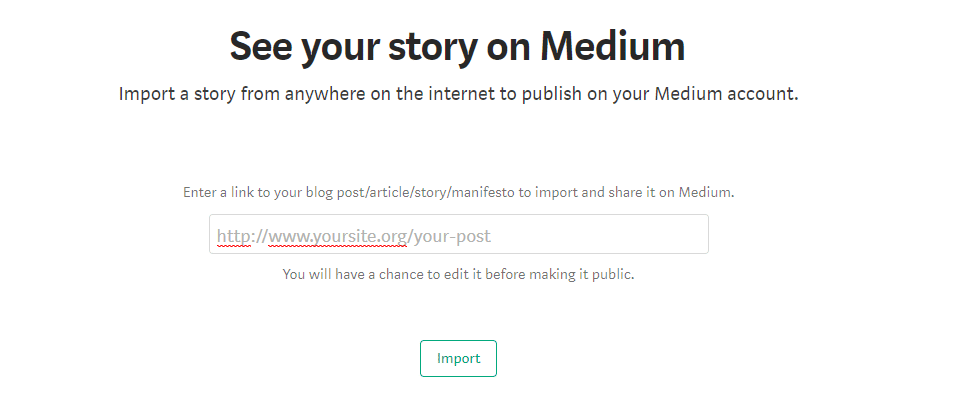
For a detailed comparison, see how Medium compares to WordPress.
We all know LinkedIn as the social media for all things business, but not everyone knows that you can also publish articles. Similar to Medium and Quora, you can use LinkedIn to reach new audiences and build your authority.
You can use content that’s similar to what’s already on your blog, as well as a link to other helpful blog posts. For more, read our article on how to leverage your LinkedIn marketing efforts.
There are a few things to take note of before publishing on these channels.
First, while this is long-form content, we wouldn’t recommend adding regular CTAs as it may be considered spammy.
Second, while each platform allows for direct linking, it isn’t recommended, as affiliate links can be considered low quality. For this reason, Kinsta and many other affiliate programs don’t allow direct linking in their affiliate programs. Instead, we recommend that you link to a blog post that has affiliate links.
Summary
Affiliate marketing is a great way to earn passive income, but it isn’t always easy to sell.
In this post, we shared 21 proven tips and tricks to supercharge your affiliate sales, no matter what industry you’re in. They range from optimizing your content creation and links to building and strengthening your community and authority. Start implementing them today to see results.
If you’re looking for a new affiliate program, check out Kinsta’s! For every WordPress referral, we offer up to $500 and a 10% monthly recurring lifetime commission. And for every referral to Application Hosting and Database Hosting, we offer a 5% monthly recurring lifetime commission. With our cumulative recurring commission model, you can earn a true passive income!


